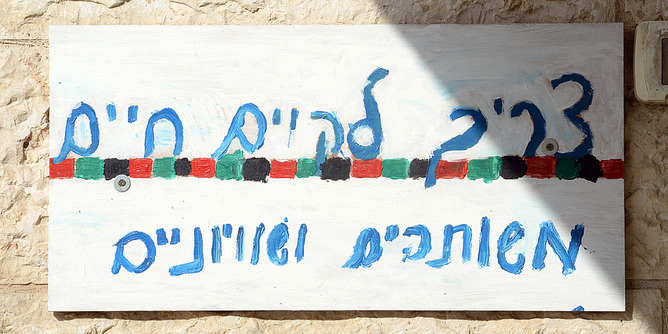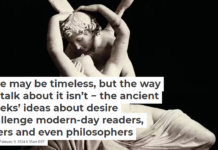
By Tony Gallagher, Queen's University Belfast
Israel is a deeply divided society, a fact reinforced by separate schools for Jews, Arabs and Christians. In 1984, the Hand-in-Hand movement began working to build peace via a network of integrated, bilingual schools for Arab and Jewish children in Israel, but in recent days their bilingual Max Rayne school in Jerusalem has been the target of an arson attack.
Viewed from Northern Ireland this assault on an important symbolic hope for a better, shared future, is wearily familiar. Northern Ireland is also a deeply divided society, albeit one that has enjoyed a significant measure of peace in recent decades. Like Israel, our schools have been divided on religious grounds, and many have faced arson attacks. But new connections are being forged between educators in both places. In the face of those who seek to deepen the divisions of the past, some are seeking to work through schools to develop new relationships between communities which look to a better future.
Divided schools, divided society
Violence in Northern Ireland was rooted in political, national and religious divisions. Parallel systems of Protestant and Catholic schools have operated since the 1830s and many wondered if this had contributed to the divisive atmosphere. There was a widespread, if inconclusive, debate on whether religiously divided schools reflected or exacerbated the divided society. Were they akin to the segregated schools of apartheid South Africa, or did separate Catholics schools represent a sanctuary for a minority which otherwise faced discrimination throughout society?
In the absence of consensus on the consequences of separate schools, in the decades following the 1970s, three main education interventions developed with the aim of promoting reconciliation between Protestants and Catholics. The first were changes to the curriculum aimed at producing common textbooks and programmes in subjects like religious education, history, education for mutual understanding or citizenship.
Contact programmes were also introduced, bringing young Protestants and Catholics together for joint projects. And new religiously integrated schools for children of all religious backgrounds were opened. The first school was established in 1981 and there are now 62 schools, comprising 7% of enrolled pupils. In recognition of the growing importance of providing equality in education, equal funding was also introduced for Catholic schools in the late 1980s, which had previously only received partial support for capital projects and lower recurrent funding.
The peace process in Northern Ireland has provided an opportunity to assess the impact of these interventions. The best reasonable judgement was that while much was done, relatively little was achieved. Many dedicated and committed teachers carried out inspirational work, but few found support and recognition from education leaders. Overall, there was little evidence of significant systemic change.
Birth of ‘shared education’
In this context, a new approach, termed “shared education”, emerged in the 2000s. Rather than address the long-standing question on whether separate or common schools was “the answer”, shared education reframes the issue by encouraging collaboration between networks of schools. Pupils from both Protestant and Catholic schools (and integrated schools where possible) move between schools to take classes, and teachers work together to share expertise and experience. There have been examples of such collaborative activity in England and the US, but they were mainly focused on school improvement, and there were few examples of collaboration between schools from different ethnic communities.
From 2007 onwards, Northern Ireland’s Sharing Education Programme has worked with almost 150 schools in 26 collaborative networks in which some 10,000 pupils have routinely moved between schools to take classes. There is evidence emerging that collaboration helps teachers tap into a wider repertoire of expertise and raise education standards.
It has provided pupils with opportunities to meet regularly with pupils from the other community and promote reconciliation. And we are seeing evidence that parents and the wider communities home to the collaborating schools are coming together in ways which never happened before.
Shared education is now being mainstreamed: its goals were included in the Programme for Government 2011-2015 and a £58m initiative was launched in September by Northern Ireland’s education minister to support and encourage collaboration still further.

Paul Faith/PA Archive
A shared education campus programme at Lisanelly, Omagh is encouraging the sharing of resources and facilities and the next wave of Peace Funding from the EU will include shared education as a key priority. It seems that we are moving towards a situation where collaboration between schools is becoming the norm, providing a range of opportunities for social cohesion which have never been achieved before.
Interest from Israel
The model is generating international interest, not least in Israel. Over the past three years some tentative experiments in shared education collaborations have started to develop with the Center for Educational Technology in Tel Aviv, involving Jewish, Arab and Christian schools. The number of schools involved in Israel is small at the moment, but interest in is growing. Links between those promoting shared education in Israel and Northern Ireland have been developed, and both are working to learn from each other and share experience.
The issue being addressed is one faced by many societies. Leaving aside the unambiguously wicked models of enforced segregation in schools, such as in South Africa under apartheid and in the Southern States of the US until 1954, many societies face the challenge posed by the recognition of identity versus the desire for cohesion, separate schools or common schools. The shared education model may provide a novel means of achieving both.
![]()
This article was originally published on The Conversation.
Read the original article.




















